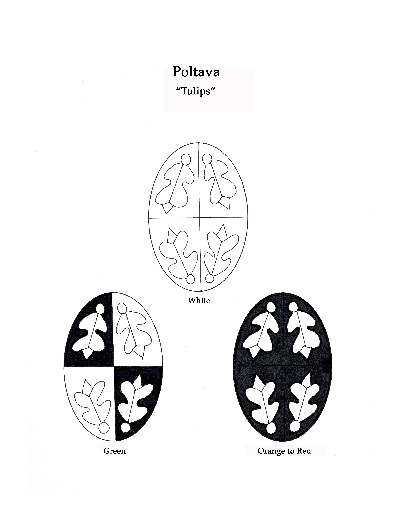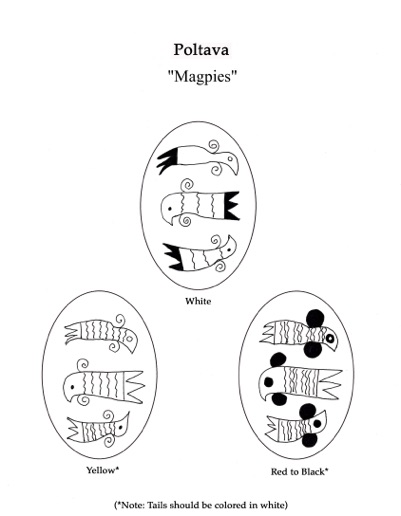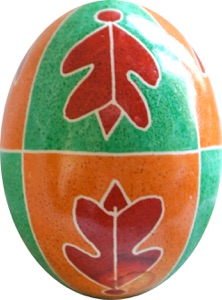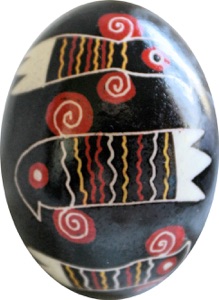Poltava region
Полтавщина
Poltava region
Полтавщина

Pysanky from Poltava often utilize plant motifs; birds are less common, but the magpie pysanka above is quite well known. I’m not sure of Onyshchuk’s source of the «Тюльпани» (“Tiulpany,” tulips) pysanka on the left; her version is pictured below. The colors seem bright and garish for me; I suspect the original, in natural dyes, was much more muted.

Tulips are a common motif on Ukrainian pysanky; this is not becasue tulips were widespread throughout Ukraine–they weren’t–but because, like orchids, they weren’t well known, and served as a name for fantastical flowers.
Birds are sometimes seen on pysanky, but rarely in the central Ukrainian regions of Ukraine; floral motifs are much more common there. Kulzhynskyi first recorded the «Сороки» (“Soroky,” magpies) in the late 19th century. This was his version on the left; Onyshchuk’s (which she has renamed “Vorony,” crows) is on the right:


Although the birds are referred to specifically as magpies, there are no specific features which would identify them as such. Bird symbols on traditional folk pysanky were usually quite stylized; while they may be given the names of specific birds, they are not naturalistic in the least.
The design sheet below has a simplified version, with only three magpies per side instead of four. Other changers are due to Onyshchuk’s version being used. The pysanka at the top of the page is written from the design sheet.


Technical details: These are two moderately difficult pysanky, but still reasonable patterns for beginners. The first pysanka has a basic “Eight” division, while the second pysanka uses a simple “Lateral” division. The first pysanka can be a bit challenging for a beginner, as it requires a lot of coloring in, which can be hard to do well.
As with most simple traditional designs, a medium or heavy stylus is best for the lines, and of course a heavy one for the dots, blobs, and coloring in.
These patterns utilize different sets of dyes. The first requires green, orange and red dyes; you will need a good orange rinse to remove the green. The second uses a more common palette of yellow, red and black dyes. (Note that the magpies’ tails should be waxed in white.)
Download these pattern sheets:
Tulips & Magpies
Тюльпани і Сороки


Back to Poltava Home
Back to Podniprovia Home
Back to Regional Pysanky Home
Back to Traditional Pysanky HOME
Search my site with Google